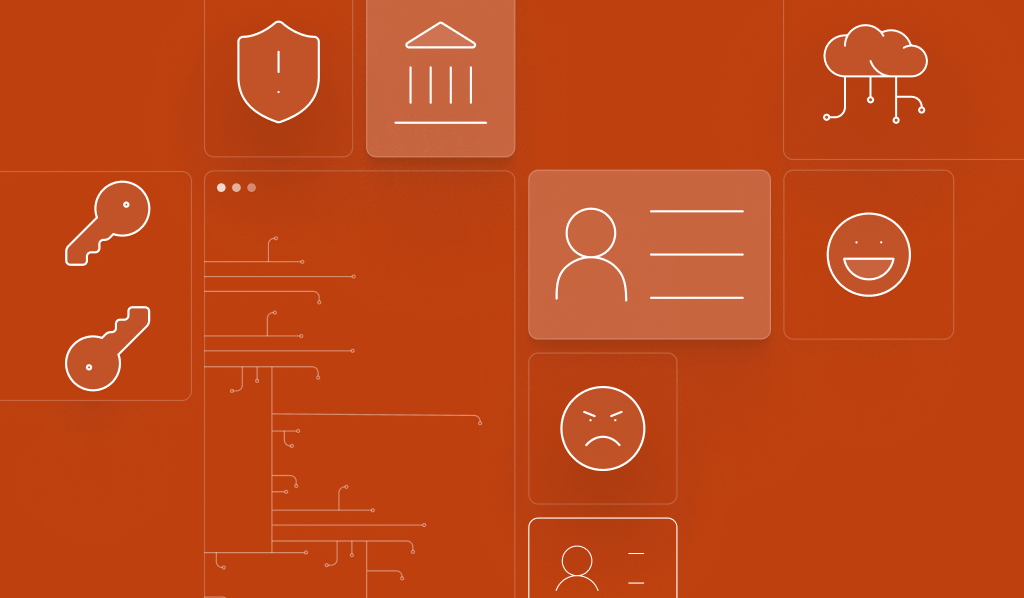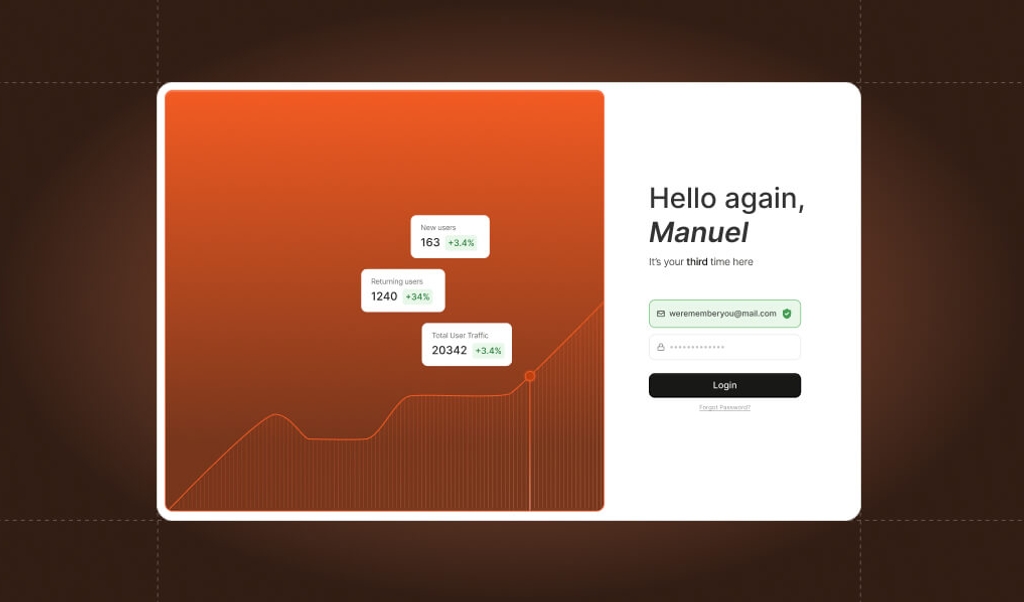
When new types of fraud appear, it’s a good bet the financial services industry will see them first. Banks, fintechs, and other companies providing financial services have always been on the front line against scams, battling everything from identity theft to account takeover fraud.
The financial services industry already uses various basic fraud prevention techniques — monitoring transactions, identifying vulnerabilities, verifying identities, and educating customers — to stay one step ahead of fraudsters.
To protect their customers, businesses in the financial space have to understand the latest trends and adopt new security practices. This post will outline five key fraud trends identified by Experian’s Future of Fraud Forecast. Understanding these trends will help you recognize the latest scams and prevent them from affecting your organization.
1. Generative AI helps fraudsters create believable deepfake content
Fraudsters are now using generative AI to create more realistic voice and video content than ever before. They can impersonate real people, like bank officials, and trick customers into revealing sensitive information.
They often initiate contact through phishing scams, where they send emails or SMS messages as though they’re a bank representative. These messages may contain links to fake websites designed to steal your login credentials. According to the FBI, there were 298,878 phishing scam complaints in 2023.
Deloitte estimates that losses from generative AI fraud could reach $40 billion in the U.S. by 2027. This staggering figure highlights the urgent need for better fraud detection methods. For more details, read our guide on the real cost of online fraud.
How to spot deepfakes and prevent fraud
Banks and fintechs must stay ahead of generative AI deepfakes by using advanced fraud detection methods, like monitoring biometrics. Monitoring customer biometrics can help authenticate a customer’s identity and correctly identify deepfakes. Machine learning algorithms support this work by analyzing patterns and detecting suspicious behavior.
Security teams should educate customers about new scams, including phishing attacks. Regular updates and clear communication provide a positive customer experience while simultaneously helping protect them from fraud.
2. Retail return fraud has a ripple effect that directly impacts banks & credit card companies
Retail return fraud happens when someone buys something, uses it, and then returns it for a refund. Sometimes, they even return items they didn't buy at all. This fraud has become more popular because it’s easy to exploit store return policies.
This type of retail fraud directly impacts banks and credit card companies with:
- Increased fraud detection costs: Financial institutions need advanced systems to detect fraudulent transactions. These systems require constant data analysis and upgraded fraud detection tools — often both hardware (like biometric authentication devices; e.g., facial recognition cameras at ATMs or fingerprint scanners) and software.
- Higher financial losses: When retailers lose money to return fraud, banks and credit card companies also face financial losses. For example, if a retailer reports return fraud, banks and credit card companies are often involved in processing these fake transactions, which incurs additional costs.
- Complex refund processes: Banks and credit card companies are responsible for handling many of these refunds. This process can become complicated when fraudulent returns are involved, draining human and financial resources in a trickle-down effect.
Retail return fraud is growing because return policies often favor customers, making it easier for fraudsters to return used or stolen goods. It’s also important to note that retailers often fail to verify return claims thoroughly.
While banks and credit card companies may not be directly impacted by the retail return process, they are affected by its financial aspect. Banks may be dragged into handling chargebacks and disputes, including investigating fraudulent transactions and pouring valuable time and resources into them that could be better used on legitimate customer concerns.
An increase in fraudulent activity may also result in higher operational costs associated with updating systems and training staff.
How to leverage data to combat return fraud
Banks and fintechs should use multiple data points to detect suspicious activity related to transactions. Data analysis helps in identifying patterns that signal fraud, such as repeated high-value returns or returns not matching original purchase details.
By monitoring transaction data in real time, financial institutions can quickly flag and investigate unusual return activities. Fraud detection systems, powered by machine learning, learn to spot and stop fraud faster before losses grow.
Also, advanced data analytics tools enable banks and credit card companies to collaborate with retailers. Sharing insights about return fraud patterns helps both parties fine-tune their strategies, reducing the risk of financial crimes.
3. Fraudsters resurrect “Frankenstein IDs”
What’s old is new again: Fraudsters are bringing back the old tactic of “Frankenstein IDs.” This involves creating synthetic identities by combining real and fake information. The FTC reports that 85% of identity theft today is synthetic.
A “Frankenstein ID” takes pieces from different people to form a new identity. So it might use a real Social Security number and a fake name. Fraudsters also use artificial intelligence to create even more convincing fake IDs.
Synthetic identity fraud can directly affect a financial institution’s bottom line or can cause problems for business customers. Either way, financial institutions need to invest in fraud detection and prevention systems designed to catch Frankenstein IDs.
How to identify Frankenstein IDs
Detecting Frankenstein IDs requires real-time fraud detection systems. Machine learning can help identify abnormal patterns by looking for mismatches in personal details such as inconsistent addresses or phone numbers, then rapidly generate alerts before banks are defrauded. Device intelligence tools can also help here, detecting IP geolocation and determining that it doesn't match the client’s address.
Like with other kinds of fraud, financial institutions should educate customers about the importance of safeguarding their identity and encourage them to monitor their accounts regularly for unusual activities.
4. Customers are returning to physical banks (and so are fraudsters)
Post-pandemic, many customers are returning to physical bank branches. Some people feel more secure discussing financial matters face to face. JPMorgan Chase said it has seen a 14% compound annual growth rate (CAGR) in deposits per branch from 2017–2022. Its branches also serve 30% more customers than in 2019.
This increase in foot traffic has been a boon for traditional banking. But with the rise in branch visits, fraudsters are getting more creative, taking advantage of customers with schemes like:
- Check fraud: Fraudsters steal a check and then set up an account with a bank branch using a fake ID. They cash the check and withdraw the money before the bank realizes what happened.
- Physical theft and skimming: Criminals can steal wallets, purses, or bank cards during in-person visits. Skimming devices placed on ATMs can capture card data.
- Insider threats: Employees with malicious intent can misuse their access to customer data. Insider threats pose a risk to account security and confidentiality.
How to enhance onsite security
- Trained security personnel: Security guards can act as a physical deterrent. Having trained personnel onsite can discourage potential criminals and provide an immediate response to suspicious activity.
- Customer education: As with generative AI fraud, banks can educate their customers by informing them about common scams and offering clear steps to help customers protect themselves.
- Train employees: Train branch employees to follow safety procedures when they’re the ones opening and closing the branch for the day to avoid takeover robberies and potential hostage situations.
5. Emotional appeals trick individuals into compromising their security
Fraudsters often use emotional appeals to trick customers into giving up personal or financial information. They might create a sense of urgency or play on emotions, making it easier for customers — and their financial institutions — to fall for their scams.
Types of emotional scams include:
- Phishing emails: They might send fake emails pretending to be from your bank, urging you to act quickly to avoid losing your money.
- Charity scams: Fraudsters can set up fake charities, especially after natural disasters, to exploit your sympathy.
- Family emergencies: They might use generative AI deepfakes to spoof voices and pretend to be a relative in trouble via a panicked phone call, claiming to need money immediately.
These scams seriously impact customers’ financial information and account security precisely because they’re so believable. Once fraudsters have the information, they can easily access bank accounts and make unauthorized transactions.
How to protect customers
Financial institutions play a key role in protecting customers from these kinds of scams. Make sure your customers are aware of common tactics used in emotional scams, like fake GoFundMe requests and charity scams. Just knowing that these appeals to emotion are common tactics can help customers avoid fraud altogether.
Next, all banks and fintechs should invest in advanced security measures, such as biometrics, to ensure that only the customer can access their account.
Finally, encourage your customers to report suspicious activities to help stay ahead of potential financial fraud. Banks and credit card companies should also provide clear steps on what to do in the case of a suspected scam attempt, improving the customer experience.
Learn how browser fingerprinting can help enhance virtual security
Traditional fingerprinting (a security method that uses your fingerprint to verify your identity) paved the way for other types of “fingerprinting,” like browser fingerprinting. Instead of a physical fingerprint, this approach uses unique identifiers from a user’s browser to identify fraudulent activity.
As fraudsters’ techniques become more advanced, tools like browser fingerprinting provide businesses in the finance sector with a powerful way to identify and block illegitimate transactions. Device intelligence tools like browser fingerprinting are critical when establishing a strong cybersecurity program.
Read our resource on browser fingerprinting for more details.
FAQ
Fraud prevention in banking and fintech involves using advanced systems to monitor transactions and identify unusual patterns. Banks and fintechs implement policies, protocols, and procedures to protect customers and assets. Key methods include threat monitoring, account monitoring, and behavioral profiling.
Banks and fintechs use various technologies to detect and prevent account fraud. Real-time fraud detection systems analyze transactions quickly to identify suspicious actions. Monitoring software integrates multiple risk management tools to track fraudulent activities. And behavioral profiling algorithms help detect unusual behavior and identify fraudulent transactions in real time.
Common fraud prevention controls for banks and fintechs include multi-factor authentication, which adds a second layer of security. Transaction monitoring software helps detect and monitor suspicious activities. Training employees to recognize social engineering tactics also helps reduce fraud risks.



